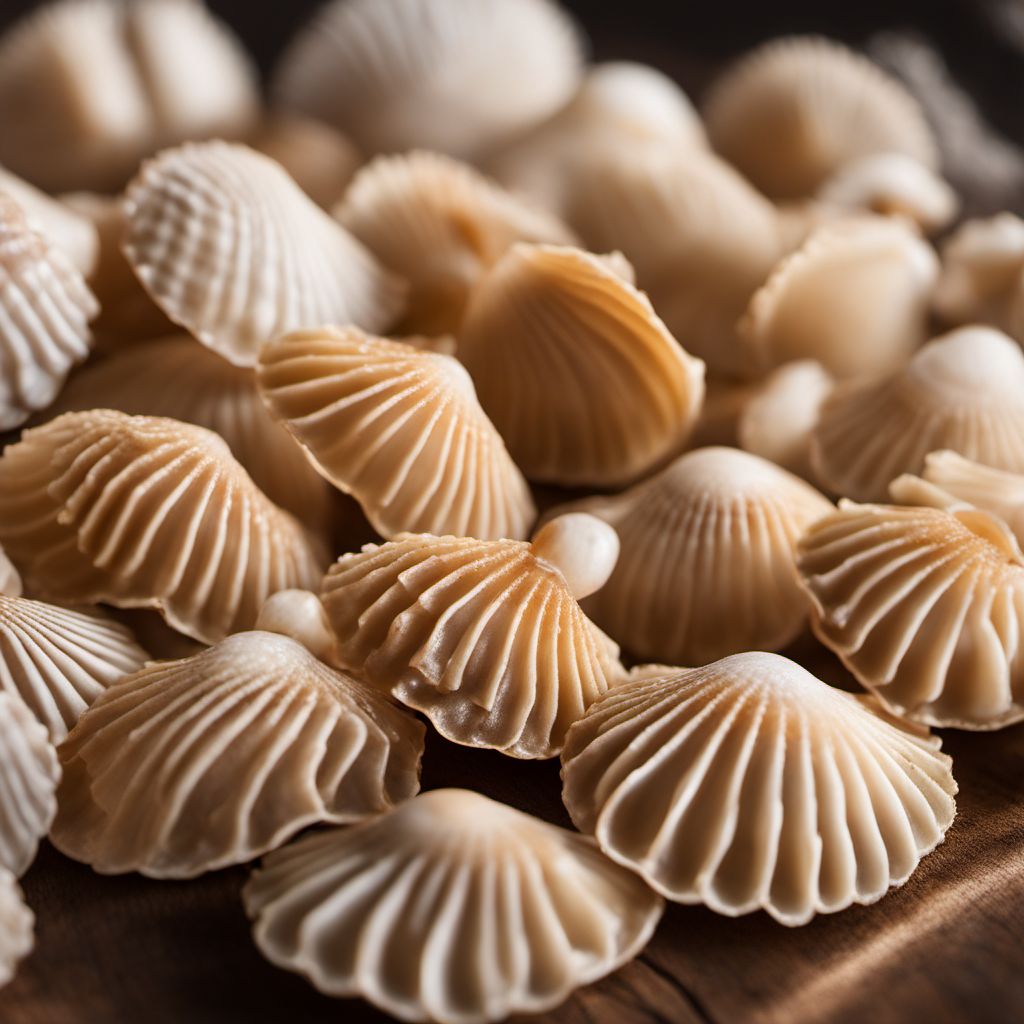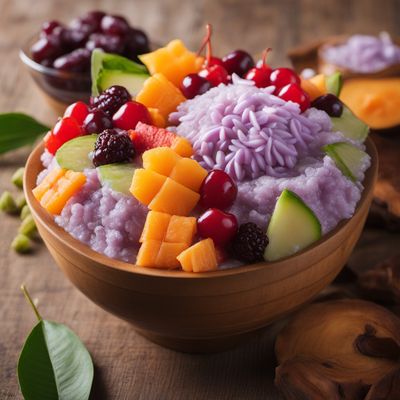
Ingredient
Cockles
The Ocean's Gems: Discovering the Delicacy of Cockles
Cockles are small bivalve mollusks with a rounded, heart-shaped shell. They have a tender and slightly chewy texture, similar to clams, and a briny, oceanic flavor. These shellfish are often enjoyed steamed, boiled, or incorporated into seafood stews and pasta dishes.
Origins and history
Cockles have a rich culinary history, particularly in European cuisines. They have been harvested and consumed for centuries, with records of their consumption dating back to ancient Rome. Cockles are commonly found in coastal areas and estuaries, and they are especially popular in countries like Spain, Portugal, and the United Kingdom.
Nutritional information
Cockles are a good source of protein, vitamins, and minerals. They are low in fat and calories, making them a healthy choice for seafood lovers. However, they are high in sodium, so individuals on a low-sodium diet should consume them in moderation.
Allergens
Shellfish, such as cockles, can cause allergic reactions in some individuals. People with shellfish allergies should avoid consuming cockles to prevent adverse reactions.
How to select
When selecting cockles, choose ones that are tightly closed or close when tapped. Avoid any cockles with cracked or broken shells, as they may be dead or spoiled. Fresh cockles should have a briny smell of the sea. If the shells are open, give them a gentle tap. If they do not close, discard them as they are likely dead.
Storage recommendations
To maintain the freshness of cockles, store them in a cool environment, such as a refrigerator or a cool box with ice. Keep them in a breathable container or bag to prevent moisture buildup. It is best to consume cockles within a day or two of purchase for optimal flavor and quality.
How to produce
Cockles are typically harvested from the wild, but they can also be farmed. To produce cockles, a suitable coastal or estuarine environment is required. The cockles are usually collected by hand or using specialized rakes or dredges. They are then sorted, cleaned, and processed for distribution.
Preparation tips
Before cooking cockles, rinse them thoroughly under cold water to remove any sand or debris. Discard any cockles with broken shells or ones that do not close after tapping. Cockles can be steamed, boiled, or added to seafood stews and pasta dishes. They pair well with flavors like garlic, white wine, and fresh herbs. Remember to remove any cockles that do not open during cooking, as they may be dead and should not be consumed.
Substitutions
Clams, mussels, or other small bivalve shellfish can be used as substitutes for cockles. They offer a similar texture and flavor profile.
Culinary uses
Cockles are commonly used in seafood stews, pasta dishes, and paella. They can also be enjoyed on their own, steamed or boiled, with a squeeze of lemon juice. In Spanish cuisine, cockles are a key ingredient in dishes like almejas a la marinera (marinara clams) and paella. In the United Kingdom, cockles are often served with vinegar and enjoyed as a snack or in traditional dishes like jellied eels.
Availability
Cockles are commonly available in coastal areas and regions with access to estuaries. They are particularly popular in Spain, Portugal, the United Kingdom, and other European countries with a strong seafood culture.
More ingredients from this category
Recipes using Cockles

Peruvian Salchipapas with Aji Sauce
Crispy Peruvian Salchipapas: A Flavorful Fusion of Sausages and Potatoes

Grilled Cockle Skewers with Spicy Peanut Sauce
Sizzling Seafood Delight: Grilled Cockle Skewers with Zesty Peanut Sauce

Onmyeon - Korean Cold Noodles
Refreshing Delight: Korean Cold Noodles with a Twist

Peruvian Criadillas Ceviche
Andean Delicacy: Peruvian Criadillas Ceviche

Peranakan Spicy Noodle Soup
Nyonya Laksa: A Fiery Fusion of Flavors

Halo-Halo Delight
Tropical Bliss: A Refreshing Twist on Halo-Halo